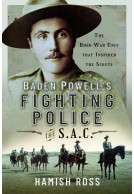Hitler's Air Defences (eBook)
Imprint: Pen & Sword Military
File Size: 17.9 MB (.epub)
Illustrations: 32 black and white illustrations
ISBN: 9781526740274
Published: 30th October 2021
| Other formats available - Buy the Hardback and get the eBook for £1.99! | Price |
|---|---|
| Hitler's Air Defences Hardback Add to Basket | £20.00 |
The first Allied bombing raid on Berlin during the course of the Second World War, took place on 7 June 1940, when a French naval aircraft dropped 8 bombs on the German capital, but the first British raid on German soil took place on the night of 10/11 May 1940, when RAF aircraft attacked Dortmund.
Initially, Nazi Germany hadn't given much thought about its aerial defences. being attacked in its 'own back yard' wasn't something that was anticipated to be an issue. Germany had been on the offensive from the beginning of the war and Hitler believed that the Luftwaffe was the much stronger air force.
In addition, from 1939-1942, the Allied policy of aerial attacks on German soil was to hit targets with a distinct military purpose, such as munitions factories, airfields etc. This meant that the Germany military could focus where they placed their anti-aircraft batteries and had a very good idea of how many they would need.
However, Germany's defensive capabilities were forced to improve as Allied raids on towns and cities increased in size and frequency. Fighter aircraft were included as part of anti-aircraft defences and flak units mastered the art of keeping attacking Allied aircraft at a specific height. This made it more difficult for them to identify their specific targets, and easier for German fighter aircraft to shoot them down before they could jettison their bomb loads.
With the Allied tactic of ‘area bombing’, Germany's anti-aircraft capabilities became harder to maintain as demand increased. The longer the war went on, along with the increased Allied bombing raids, sometimes involving more than 1,000 bomber aircraft, so the worth and effectiveness of German air-defences dwindled.
In Britain, Stephen Wynn, a retired police officer having served with the Essex Police as a constable for more than 30 years, is already ranked among the best of the Isles war writers... Britain can be proud!
ARGrunners Magazine
"This is a valuable work on an aspect of WW2 that has been given scant coverage in the general historiography of the conflict and the author is to be congratulated on his research and narrative."
Martin Willoughby, The Wessex Branch of the Western Front Association
About Stephen Wynn
Stephen is a retired police officer having served with Essex Police as a constable for thirty years between 1983 and 2013. He is married to Tanya and has two sons, Luke and Ross, and a daughter, Aimee.
When not writing, Stephen can be found walking his four dogs with his wife Tanya at some unearthly time of the morning, when most normal people are still fast asleep.





















